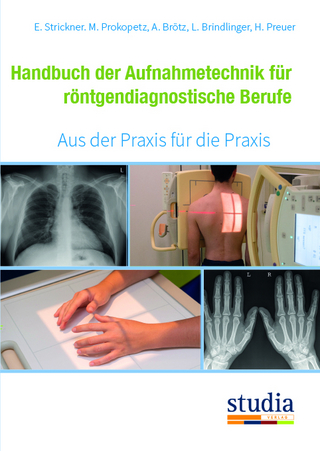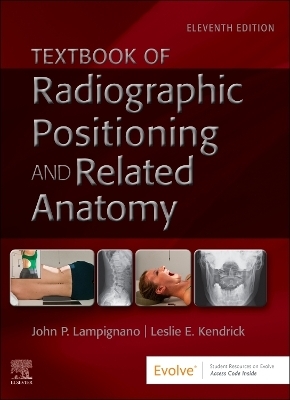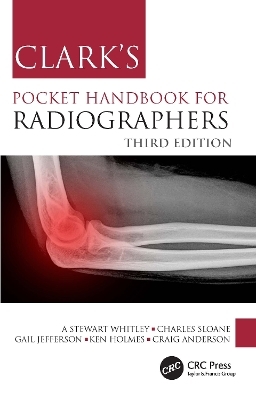
The Challenges of MRI
Iste Ltd (Verlag)
978-1-78945-113-9 (ISBN)
This collective work is made up of chapters written and designed by experts from the French community. They have endeavored to describe the techniques by recalling the underlying physics and detailing the modeling, methods and strategies for acquiring or extracting information.
This book is aimed at master’s students and PhD students, as well as lecturers and researchers in medical imaging and radiology.
Hélène Ratiney is a research fellow at the CNRS and currently head of the NMR and Optics team at the CREATIS laboratory, France. She has developed recognized expertise in the quantification of in vivo spectroscopy signals and also works on pulse design and quantitative MRI. Olivier Beuf is a senior researcher at the CNRS and currently heads the CREATIS laboratory, France. He has extensive experience of MRI applications and a thorough understanding of the associated instrumental and methodological aspects. His recent work focuses on quantitative MRI for tumor characterization and radiation therapy planning.
Introduction xiii
Hélène RATINEY and Olivier BEUF
Chapter 1 MRI Principles, Hardware Components and Quantification 1
Hervé SAINT-JALMES, Hélène RATINEY and Olivier BEUF
1.1 Introduction 1
1.2 Macroscopic magnetization and static magnetic field B0 3
1.2.1 Nuclear magnetization 3
1.2.2 Magnet 3
1.2.3 Roles and orders of magnitude 3
1.2.4 Technical approaches 4
1.2.5 Novel technologies 10
1.3 Description of the magnetization evolution 11
1.4 Excitation: perturbing the magnetization 12
1.4.1 Principle 12
1.4.2 Transmit coil 13
1.4.3 Radiofrequency signal reception 13
1.5 Spatial localization in MRI 15
1.5.1 Principle 15
1.5.2 Magnetic field gradients 18
1.6 Signal-to-noise ratio notion in MRI 19
1.7 Useful signal and information 20
1.7.1 A "complex" signal in a mathematical and bio-physical sense 20
1.7.2 From qualitative to quantitative 21
1.8 Conclusion 23
1.9 Acknowledgments 24
1.10 References 24
Chapter 2 Radiofrequency Coils: Theoretical Principles and Practical Guidelines 27
Aimé LABBÉ and Marie POIRIER-QUINOT
2.1 Coil as an electrical resonant circuit 28
2.1.1 Basic concepts 28
2.1.2 Coil tuning and matching 30
2.2 Coil as a source of a magnetic RF field 32
2.2.1 Polarization and 1 B+ and 1 B
− fields 35 2.3 Transmit coil 36
2.4 Receive coil 38
2.4.1 Sensitivity factor 38
2.4.2 Noise regimes 40
2.5 Decoupling 42
2.6 RF coil and safety 44
2.6.1 Specific absorption rate and temperature 45
2.6.2 Transmission and safety 46
2.7 Advanced topics and coil challenges 46
2.8 Conclusion 48
2.9 References 48
Chapter 3 Fast Imaging and Acceleration Techniques 51
Nadège CORBIN, Sylvain MIRAUX, Valéry OZENNE, Émeline RIBOT and Aurélien TROTIER
3.1 Introduction 51
3.2 Definition of fast imaging 52
3.3 Fast accelerated sequences 52
3.3.1 Sequence optimization 52
3.3.2 Turbo spin echo and echo-planar imaging 53
3.3.3 Non-Cartesian methods 55
3.4 Acceleration methods 58
3.4.1 Partial Fourier 59
3.4.2 Parallel imaging 61
3.4.3 Simultaneous multislice imaging 64
3.4.4 Iterative reconstruction 65
3.5 Applications 66
3.6 References 71
Chapter 4 The Basics of Diffusion and Intravoxel Incoherent Motion MRI 75
Giulio GAMBAROTA
4.1 Introduction 75
4.2 The history and physics of diffusion 75
4.3 Diffusion and NMR 80
4.3.1 First NMR measurements of diffusion 80
4.3.2 Measurements of diffusion with pulsed gradients: the Stejskal and Tanner method 81
4.4 Water diffusion in biological tissues 87
4.5 Diffusion magnetic resonance imaging 89
4.5.1 Diffusion MRI pulse sequences 89
4.5.2 Applications of DW-MRI 90
4.6 IntraVoxel Incoherent Motion MRI 95
4.7 Conclusion 97
4.8 References 97
Chapter 5 Functional MRI 101
Laura Adela HARSAN, Laetitia DEGIORGIS, Marion SOURTY, Éléna CHABRAN and Denis LE BIHAN
5.1 BOLD-contrast functional imaging and brain connectivity 101
5.1.1 Introduction 101
5.1.2 BOLD-contrast functional MRI principles 102
5.1.3 fMRI activation paradigms 111
5.1.4 Resting fMRI and functional cerebral connectivity mapping 112
5.2 Diffusion MRI and brain function 119
5.2.1 Introduction 119
5.2.2 IVIM fMRI 121
5.2.3 Diffusion functional MRI 121
5.2.4 Toward functional tractography: a global diffusion framework within the brain connectome 126
5.3 Conclusion 128
5.4 References 128
Chapter 6 Vascular Imaging: Flow and Perfusion 137
Sylvain MIRAUX, Frank KOBER and Emmanuel Luc BARBIER
6.1 Introduction 137
6.2 Contrast agents 138
6.2.1 Biological behavior 138
6.2.2 Diamagnetism, paramagnetism and superparamagnetism 139
6.2.3 Relaxivity effect 139
6.2.4 Susceptibility effect 140
6.3 Angiography 141
6.3.1 White-blood imaging 142
6.3.2 Phase contrast imaging 145
6.3.3 Black-blood imaging 146
6.3.4 Other techniques 149
6.3.5 Dynamic angiography 149
6.4 Perfusion imaging 150
6.4.1 Dynamic susceptibility contrast 150
6.4.2 Dynamic contrast-enhanced 153
6.4.3 Arterial spin labeling (ASL) 157
6.4.4 Experimental approaches 159
6.5 Considerations for imaging in humans and small animals 160
6.5.1 Angiography in rodents 162
6.5.2 Perfusion MRI in rodents 162
6.6 References 162
Chapter 7 Quantitative Biomechanical Imaging via Magnetic Resonance Elastography 167
Olivier BEUF, Philippe GARTEISER, Kevin TSE VE KOON and Jonathan VAPPOU
7.1 Fundamentals of magnetic resonance elastography 167
7.1.1 Introduction 167
7.1.2 MRE signal encoding 170
7.1.3 MRE data reconstruction 175
7.2 MRE sequences 178
7.2.1 Fractional encoding 178
7.2.2 Multidirectional encoding 179
7.2.3 Diffusion MRE 180
7.2.4 Optimal control MRE 180
7.3 Main targeted organs and applications 183
7.3.1 Liver MRE 183
7.3.2 Brain MRE 186
7.3.3 MRE and other organs 187
7.3.4 Other applications 189
7.4 Conclusion 192
7.5 Acknowledgments 193
7.6 References 193
Chapter 8 Imaging of Dipolar Interactions in Biological Tissues: ihMT and UTE 199
Guillaume DUHAMEL, Olivier GIRARD, Paulo LOUREIRO DE SOUSA and Lucas SOUSTELLE
8.1 Introduction 199
8.2 Origins of ultrashort T2 201
8.2.1 Dipolar coupling in NMR 201
8.2.2 Dipolar resonance line broadening 203
8.2.3 Motional averaging 205
8.3 Imaging of the inhomogeneous magnetization transfer 206
8.3.1 Dipolar order and radiofrequency saturation 206
8.3.2 Dipolar order and inhomogeneous magnetization transfer 209
8.3.3 Specificity of the ihMT signal and relaxation of the dipolar order 212
8.3.4 Specificity of the ihMT signal to myelin 215
8.3.5 Research outlook 216
8.4 Ultrashort echo time imaging 217
8.4.1 Definition of T2 ranges 217
8.4.2 Distribution of short T2 values in cerebral tissue 218
8.4.3 What are the technical challenges for detecting signals with ultrashort T2? 218
8.4.4 What are the challenges for the characterization of signals with ultrashort T2 in the cerebral tissue? 222
8.4.5 Applications: myelin imaging 224
8.5 Conclusion 226
8.6 References 227
Chapter 9 In Vivo MR Spectroscopy and Metabolic Imaging 233
Julien FLAMENT, Hélène RATINEY and Fawzi BOUMEZBEUR
9.1 Introduction 233
9.2 In vivo MR spectroscopy 234
9.2.1 Free induction decay signal 235
9.2.2 Chemical shift and dipolar coupling 237
9.2.3 Metabolites investigated in MRS 241
9.2.4 Principle of signal localization 241
9.2.5 Signal editing, suppression and inversion 245
9.2.6 Experimental considerations in MRS 247
9.3 Processing and quantification of MRS signals 247
9.3.1 Good practices for preprocessing MRS/CSI data 247
9.3.2 Quantification method 252
9.4 Chemical exchange saturation transfer imaging 257
9.4.1 General principle 258
9.4.2 Conditions for CEST effect 258
9.4.3 Saturation transfer 262
9.4.4 Characterization of the magnetization transfer 264
9.5 Non-proton nuclei MR spectroscopy or imaging 266
9.5.1 Nuclei of interest in metabolic MRS/MRI 266
9.5.2 Applications overview 267
9.6 Conclusion 270
9.7 References 270
Chapter 10 Physical-model-constrained MRI: Fast Multiparametric Quantification 277
Benjamin LEPORQ, Thomas CHRISTEN and Ludovic DE ROCHEFORT
10.1 Introduction 277
10.2 Multiparametric MRI based on chemical-shift-sensitive acquisitions 278
10.2.1 Signal’s origin and chemical-shift-encoded acquisitions 278
10.2.2 Physical models and optimization methods for the quantification 279
10.2.3 Clinical and preclinical applications 285
10.3 Multiparametric MRI using steady-state acquisitions in repeated fast sequences 287
10.3.1 Steady state in a stationary sequence without transverse effects 287
10.3.2 Transverse effects considerations for describing steady states 288
10.3.3 Uses in multiparametric quantitative imaging 293
10.3.4 Clinical and preclinical applications 295
10.3.5 Conclusion 297
10.4 MRI fingerprinting 297
10.4.1 Concept 297
10.4.2 Different types of measurements 299
10.4.3 Technical developments 302
10.4.4 Applications and perspectives 304
10.5 Conclusion 304
10.6 References 305
Chapter 11 Interventional MRI 311
Bruno QUESSON and Valéry OZENNE
11.1 Introduction to interventional MRI 311
11.1.1 Intervention planning 311
11.1.2 Pre-operatory imaging 312
11.1.3 Post-operative follow-up imaging 312
11.2 Technical considerations in interventional MRI 314
11.2.1 Choice of the MRI acquisition sequence 314
11.2.2 Image reconstruction 315
11.2.3 Image analysis and display 315
11.2.4 Motion management 316
11.3 Interventional MRI hardware 317
11.3.1 Intracorporeal medical devices 317
11.3.2 Extracorporeal therapeutic medical devices 319
11.4 MR-Linac 319
11.5 MRI thermometry for guided thermal therapies 321
11.5.1 Principle of MRI thermometry 321
11.5.2 Practical implementation, advantages and limitations of MRI thermometry 325
11.6 High-intensity focused ultrasound 327
11.6.1 General principles 327
11.6.2 Application domains 330
11.7 Perspectives of interventional MRI 331
11.8 References 332
Chapter 12 Ultra-high Field Imaging 335
Virginie CALLOT and Alexandre VIGNAUD
12.1 Historical overview 335
12.2 Quest toward higher field MR systems - why? 337
12.2.1 Advantages and benefits of ultra-high field systems 337
12.2.2 Disadvantages and challenges 343
12.3 Quest toward higher fields - how? 347
12.3.1 Technical constraints 347
12.3.2 Physiological constraints, contraindications and safety 348
12.4 Main applications and novel opportunities 349
12.4.1 Cerebrovascular diseases 350
12.4.2 Brain tumors 352
12.4.3 Focal epilepsy 353
12.4.4 Multiple sclerosis 353
12.4.5 Sodium imaging 354
12.4.6 Creating new normalization spaces (templates) 355
12.4.7 Imaging of the cartilage and muscle injuries 356
12.5 Parallel transmission: technical solutions and imaging 357
12.6 Conclusion 359
12.7 Acknowledgments 361
12.8 References 361
List of Authors 369
Index 373
| Erscheinungsdatum | 10.05.2024 |
|---|---|
| Verlagsort | London |
| Sprache | englisch |
| Gewicht | 851 g |
| Themenwelt | Medizin / Pharmazie ► Gesundheitsfachberufe ► MTA - Radiologie |
| Medizin / Pharmazie ► Medizinische Fachgebiete ► Radiologie / Bildgebende Verfahren | |
| Technik ► Medizintechnik | |
| ISBN-10 | 1-78945-113-2 / 1789451132 |
| ISBN-13 | 978-1-78945-113-9 / 9781789451139 |
| Zustand | Neuware |
| Haben Sie eine Frage zum Produkt? |
aus dem Bereich


